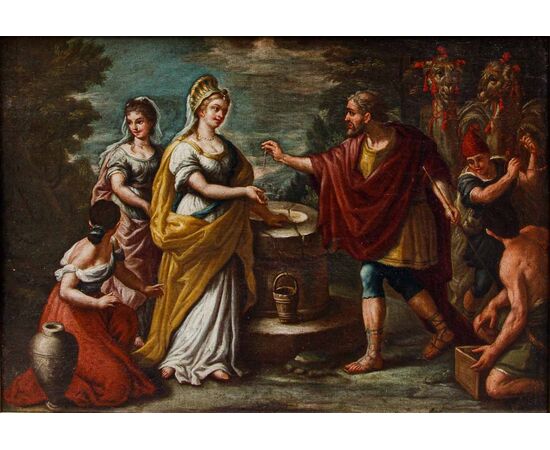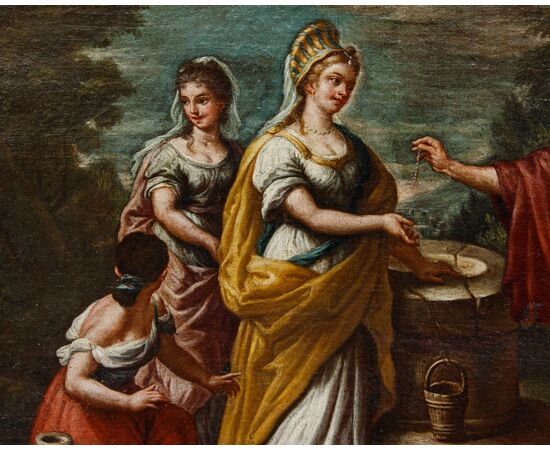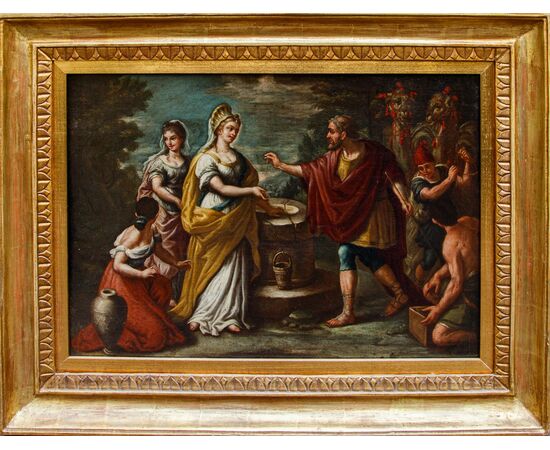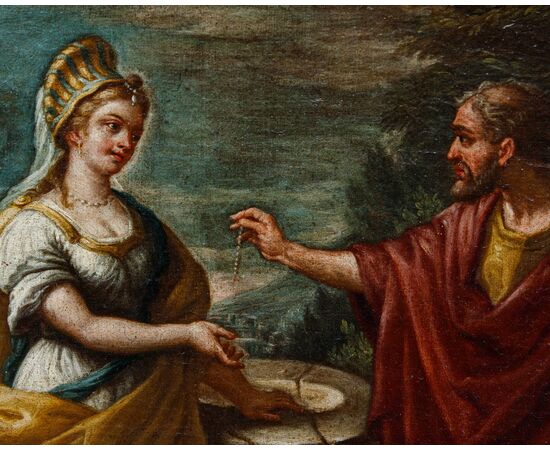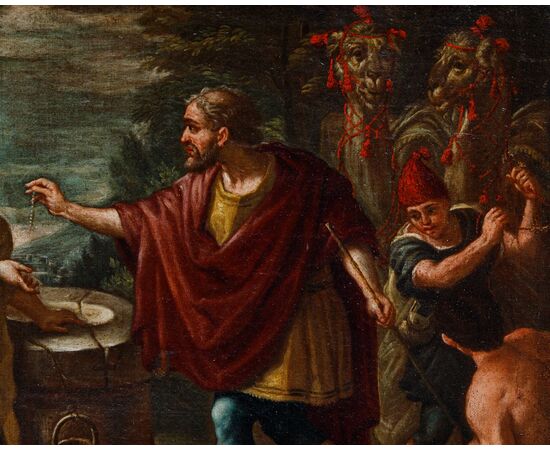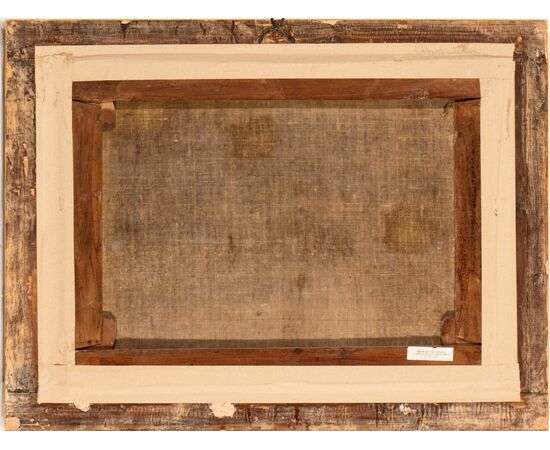Rebecca at the Well
Neapolitan artist from the early 18th century
Rebecca at the Well
Oil on canvas, 50 x 66 cm
With frame, 64 x 83 cm
After the death of his wife Sarah, Abraham decides to find a wife for his son Isaac. Therefore, he sends his servant Eliezer, endowed with precious treasures, to Mesopotamia, their land of origin, in search of a young woman to give him as a wife who had the same roots. During a stop at the well of the city of Harran, Eliezer meets a young woman named Rebecca, of incredible beauty and goodness of spirit, who does not hesitate to offer him water from her amphora. Abraham's servant understands that she is the maiden sent by the Lord and offers her jewels as a pledge of marriage to Isaac.
In our painting, which depicts the moment of the meeting between Abraham's faithful servant and the beautiful Rebecca, many of the key characteristics of Neapolitan painting between the 17th and 18th centuries are evident. Clear references are made to the prolific production of Francesco Solimena, an artist who was the absolute protagonist of that season in Campania. Born in Canale di Serino in 1657, Francesco Solimena was one of the most dominant figures in Neapolitan painting between the late 17th and early 18th centuries. Initially trained with his father Angelo and then with Francesco di Maria, he was able to synthesize the predominant influences of the Roman Baroque with the local tradition, creating a grandiose and theatrical style that earned him enormous fame and numerous commissions, both institutional and private, throughout Europe. His works, characterized by dynamic compositions, vibrant colours and a profound and heartfelt emotionality, ranged from large fresco cycles for churches and palaces, such as those in the Cathedral of Pozzuoli or the Certosa di San Martino in Naples, to altarpieces and portraits of a more intimate and private nature. Admired by princes and collectors, Solimena was not only a prolific artist but also an influential master, whose workshop attracted numerous pupils and spread his artistic language far beyond the borders of the Kingdom of Naples. He died in Naples in 1747, leaving a powerful artistic legacy that influenced generations of painters. The painting features several characteristics deriving from Solimena, including the sense of grandeur and theatricality, the vast contingent of figures that occupies the scene, the composite dynamism of the characters - arranged in such a way as to create a continuous sensation of movement - and the marked colourism; it could therefore have been produced within his vast workshop or at least easily connected to an artist who absorbed his ideas and innovative features.

